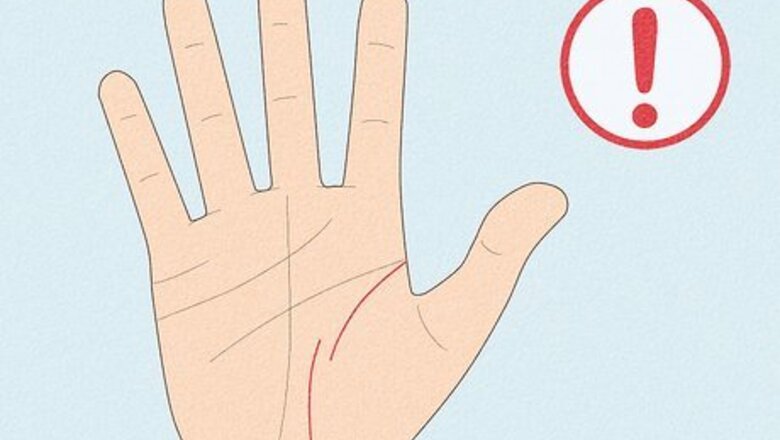
views
- A broken life line is generally said to indicate that a person will experience a serious setback at some point in their life, like an illness or injury.
- It’s thought that the size of the break indicates the length of the struggle. A large gap or break in the line indicates a longer period of setbacks.
- Many palmists say that closer to the base of the thumb the break is, the sooner in life the struggle will occur.
What does a broken life line mean?
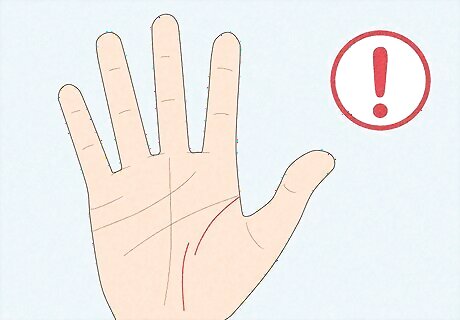
A broken life line may symbolize a serious struggle or illness. Many palmists interpret a sudden break in the life line—where the line stops, then starts again (sometimes with the ends parallel)—as an omen of misfortune. This misfortune might come in the form of loss, a struggle, disease, or an accident that negatively impacts your physical or mental health. That said, a broken life line doesn’t mean a person will die prematurely. There’s a reason it’s just a break and not a dead end. Life goes on! In addition, a broken line accompanied by a small line parallel to the break, a square shape that connects the break, or overlapping frayed lines at the break, all suggest a full recovery.
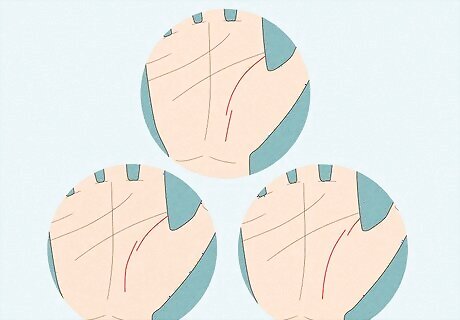
The size and location of the break correspond to the timing of the event. The size of the break often corresponds with the duration of a misfortune. It’s all relative, but a larger break might mean a longer period of struggle. Also, the placement of the break might suggest when in your life you’ll experience this struggle. For example: A break toward the start of the line, toward where your thumb and forefinger connect, suggests a struggle in your early life. A break toward the center of the line, where it curves around the base of your thumb, suggests a struggle in your midlife. A break closer to the base of your thumb indicates a struggle in late life.
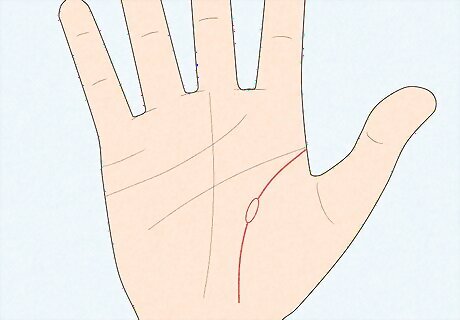
Chains or islands on your life line indicate temporary interruptions. While not a full break, an island (where the line is interrupted by a small circle) on your life line also suggests some sort of difficulty, though not as drastic a difficulty as a break. This might be a stressful or turbulent period, emotionally or physically. Similarly, a chain, or a series of islands, suggest longer periods of smaller interruptions, like uncertainty or troubles that lead into one another. Both markings tend to be small and, likewise, only temporary. With chains or islands, it’s likely that a person will make full recovery from their negative experiences.
Life Line Overview
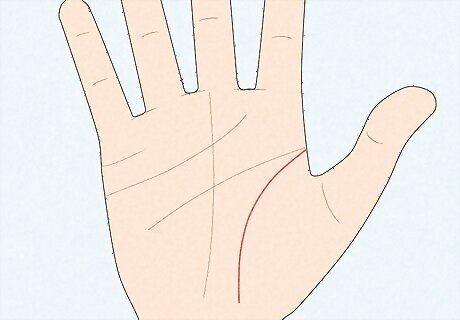
Your life line is the arced line running around the base of your thumb. This line begins at the bottom of your hand and runs up and toward the spot where your index finger and thumb meet, ending right under the bottom joint (or “mount”) of the index finger. While it’s most often a curve, some people have a flat life line. When reading the life line, use the line on your dominant hand, which is the hand most palmists default to.

The life line is said to reveal your vitality. Some palmists claim the length of your life line corresponds to the length of your life. Many others disagree, though, and say that while the lifeline is vague and not always understood, it suggests the way or style in which someone lives. It might also suggest how “grounded” that person is, or how in touch with their body they are. For example, someone with a very round or curved life line may lead a well-rounded life, with many enriching experiences. In addition, the base of the thumb is known as the “Mount of Venus,” and often indicates a person’s zest for life. Someone with a pronounced or protruding mount may be more passionate than someone with a smaller mount.
Interpreting the Life Line

Long line A long life line that runs all the way from the base of your palm to the point between your index finger and thumb suggests a life of good health. A person with a long life line might not get ill very easily, or tends to avoid major injuries. Their body is reliable, and they can count on it to keep them up and about. People with long life lines tend to put effort into maintaining their health and mobility into old age, staying active with regular walks and other exercises.
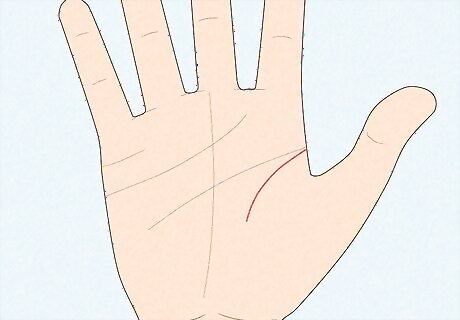
Short line A short life line that doesn’t totally span the base of the thumb represents physical resilience. People with short life lines tend to bounce back from illness and injury fairly quickly. That said, they may be vulnerable to manipulation. Since this grounding line is short, they might have trouble seeing the reality of certain situations, making them easier to be taken advantage of. For example, someone with a short life line might tend to enter unhealthy romantic relationships, or stay at jobs that aren’t a good fit for them.

Thick or deep line A distinct or substantial life line indicates that a person is strong or athletic. They’re a significant physical presence, have strong ties to their body, know what it’s capable of, and know how to use it. People with thick lifelines are often athletes, or people who perform a lot of physical labor. They keep their bodies fit, but also risk overdoing it if they push too hard.
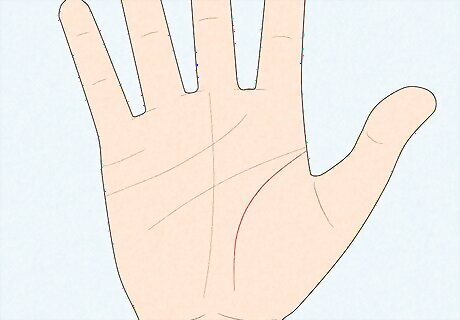
Faint or thin line Someone with a faint or thin line has overall low energy. They might find it difficult to stay motivated, or periodically lose touch with what drives them. That said, the line is still present, and so they often find their way back to their path. Those with faint life lines may be more prone to bouts of depression or periods where they feel directionless. Sometimes, though, all they need is a spark in the form of finding a new hobby or passion to get them back on their feet.
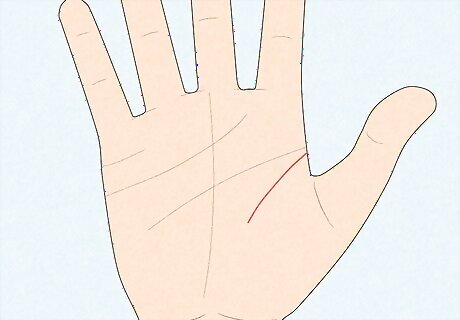
Straight line Straight life lines suggest a person who works hard. They tend to brute-force their way through life, and find success by putting in the effort. That said, they often need to take breaks or find ways to reconnect with their bodies outside of work, like through relaxation. For example, people with straight life lines tend to put in a lot of overtime at work, or might obsess over doing things “the right way.” They focus on success in the things they can control—sometimes a little too much.
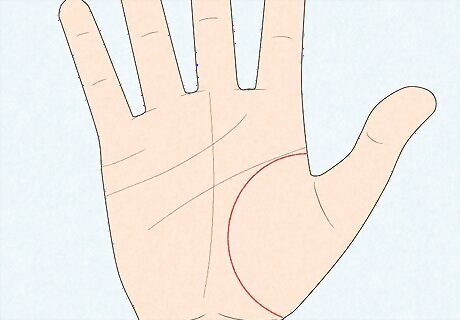
Curved line Rounded or well-arced life lines might symbolize a person with a robust life. These people tend to have a wide variety of enriching experiences, and are generally well-rounded and world-wise people, though they may not excel at any one thing. These people tend to be travelers who experience many cultures, or jacks of all trades who flit from one hobby or profession to another. They make excellent conversation partners.
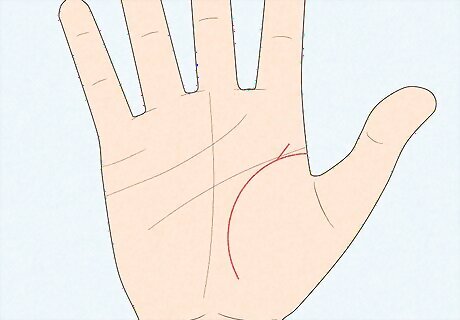
Forked line Forked life lines suggest significant life changes. If the life line splits and diverges, it’s sometimes taken to mean that the person will travel far distances, either geographically or spiritually. A forked life line is also said to mean that a person will be faced with a major life choice that will lead them down one of two paths. Some palmists interpret upward forks as positive redirections in life, while downward forks indicate negative changes in someone’s life.
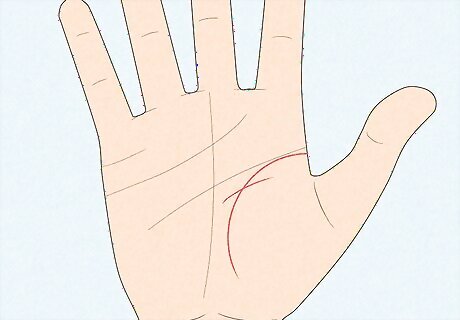
Intersecting lines Shorter lines that cut through a life line often indicate unexpected bumps in the road of someone’s life. These bumps can be physical or emotional, but they’re just that: bumps. They’re temporary, and the person will be able to eventually navigate them. For example, an intersecting line might suggest a breakup or the loss of a career. They’re major events in the moment, but with some time and hindsight, they’re just another feature of a person’s path.
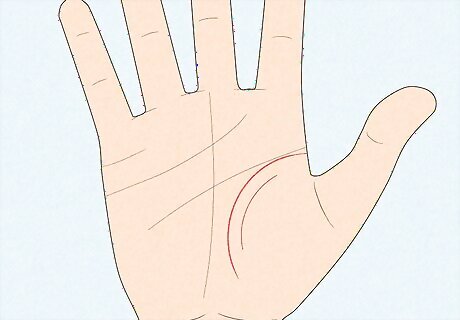
Double line A double life line represents a double-life. This double life could come in the form of an outward persona someone shows the public and a more private persona they show around their friends. Or, it could mean a case of dual ambitions: a person working toward one life, like being an author or actor, while living another life to support themself. Alternatively, a double or even triple line may represent an excess of positive energy, so much so that the person needs an extra life line to signify it. These people are often incredibly fortunate; things just tend to go their way more often than not.
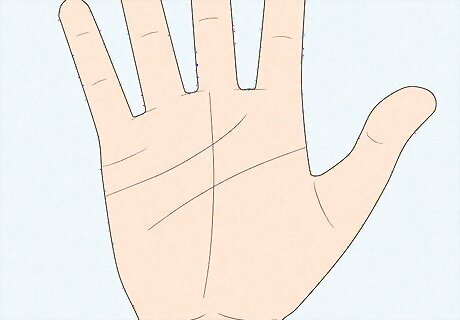
No line Some people are missing their life line altogether. This might signify a person who lacks direction in their life, or who lives a life of chaos. They’re missing this grounding line, and so have little to guide them, and instead must find their own way. It’s no simple task, but it’s also an admirable and impressive way to live. For example, someone with no life line may be without an immediate family or a home for some period of their life. But without that framework, they get to build and shape their own life from scratch.
Other Major Palm Lines
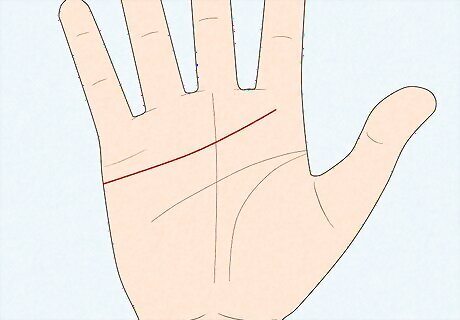
The love line Also known as the “heart line,” this line stretches horizontally across your palm, just underneath the “mounts” or base joints of your finger. Reading the love line tells you how you relate to and form connections with other people. A love line that curves upward suggests someone who’s caring or empathetic. A downward curve suggests someone who might have trouble expressing themself.
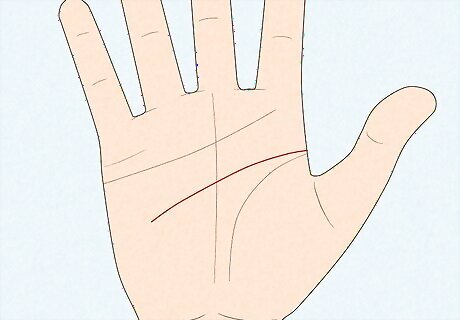
The head line The head line rests between your love line and your life line, running across the length of your palm diagonally. Generally, it gives insight into how a person processes new information or thinks through problems. A long and flat head line might indicate a person who has a level head and thinks clearly. A shorter headline might indicate someone who’s more impulsive, or who thinks on their feet rather than carefully plans their actions.

The fate line Also called the “destiny line,” this the vertical line that runs from the base of your palm to the start of your middle finger. It’s said to show you how much of your life is influenced by circumstance, or by events outside of your own control. A deep or clear fate line suggests that a person’s life may involve a large amount of coincidence or chance, or that their path is largely decided by fate. Many people are missing fate lines entirely, which suggests they’ll live a fairly predictable or straightforward life.
















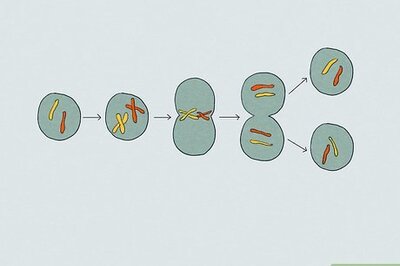



Comments
0 comment